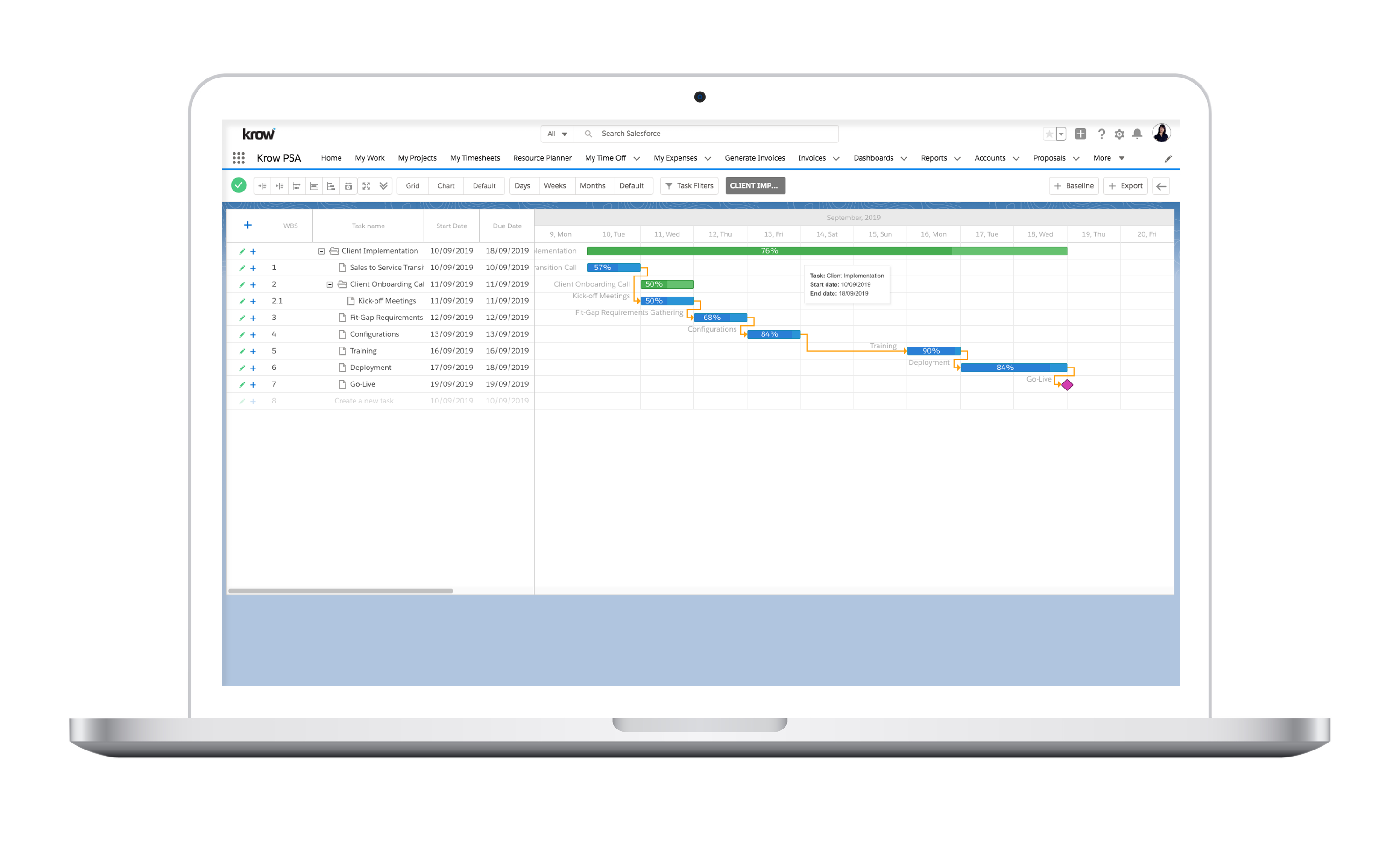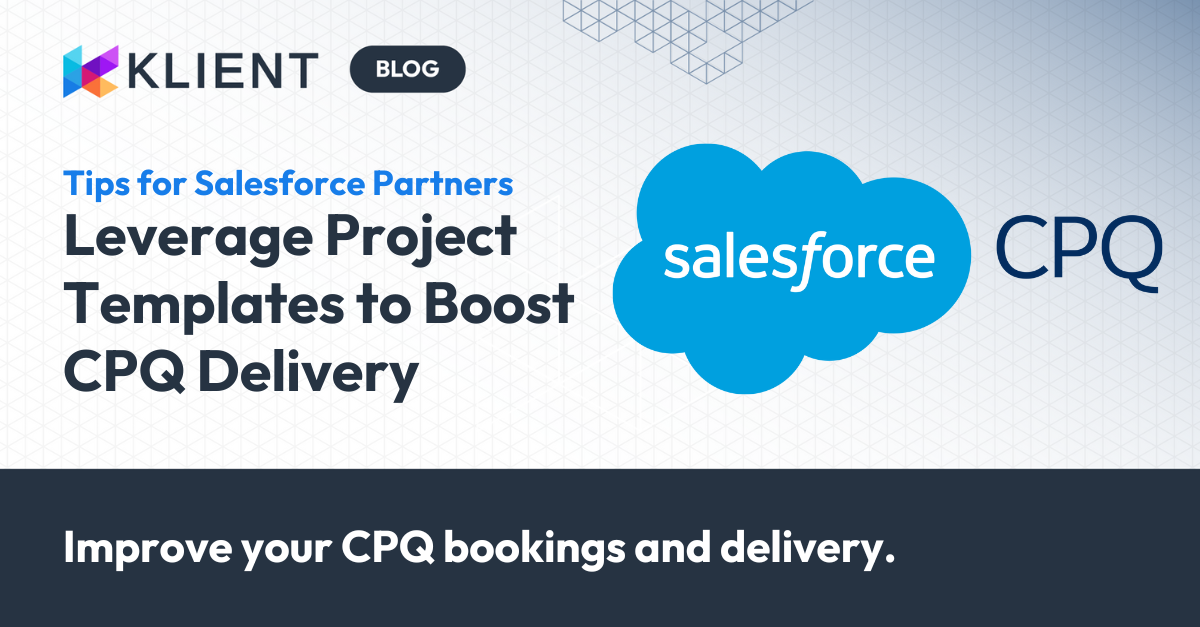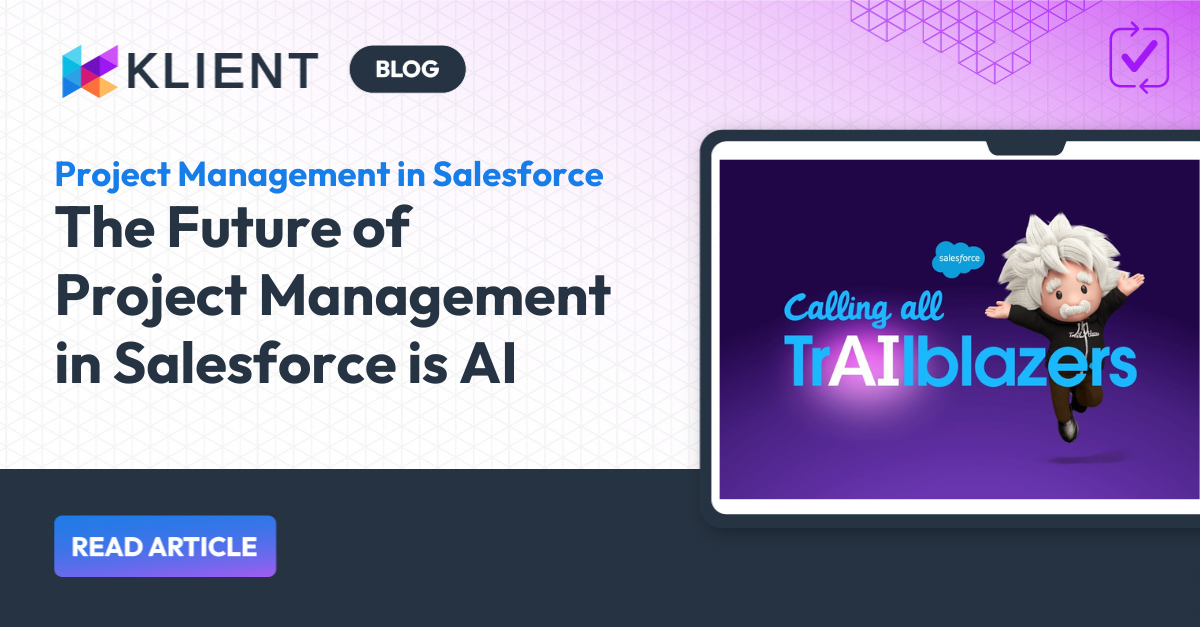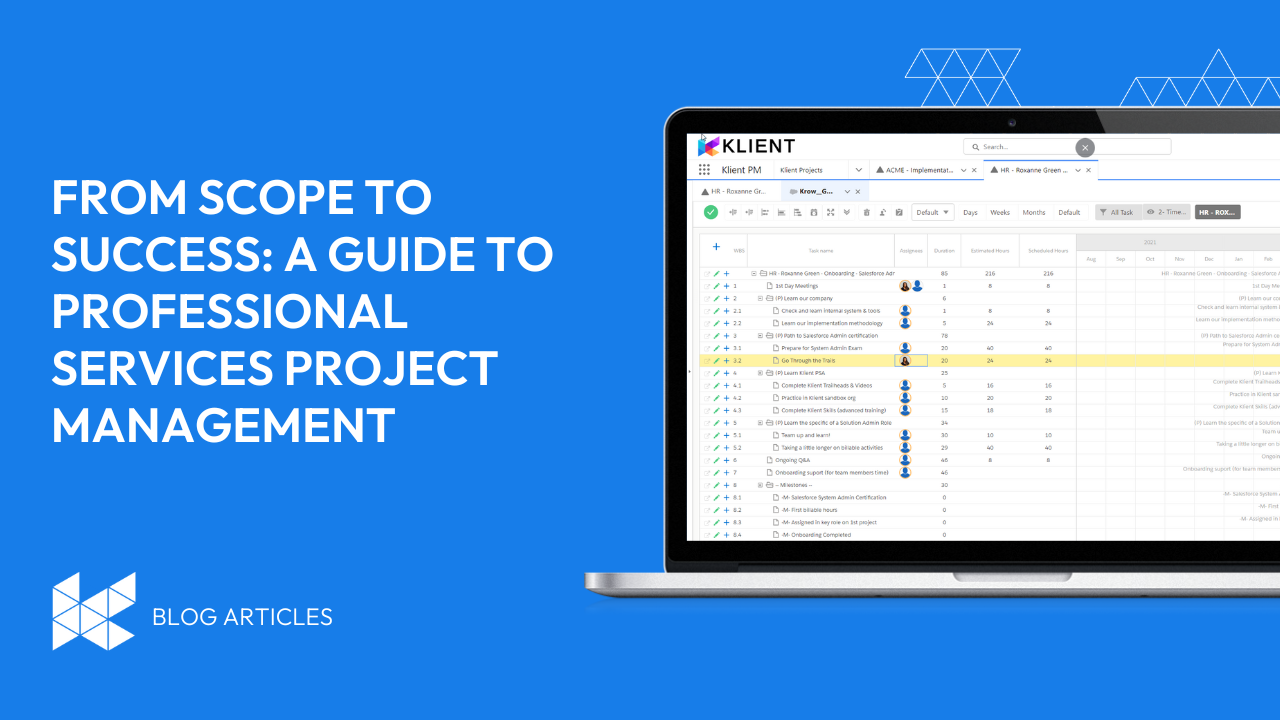
From Scope to Success: A Guide to Professional Services Project Management
Why Project Management is Essential in Professional Services
Professional services projects can be complex, involving multiple stakeholders, tight timelines, and unique requirements. The success of these projects often depends on effective project management. Without project management, your projects may not be completed on time or within budget, leading to client dissatisfaction and negatively impacting your bottom line.
The Challenges of Project Management in Professional Services
Professional services projects come with unique challenges that can make project management difficult. Some common challenges include:
- Unclear project scope and objectives: Professional services projects can be open-ended or may have changing requirements, making it difficult to define clear objectives and deliverables.
- Complex stakeholder management: Professional services projects often involve multiple stakeholders with varying needs and expectations, making it challenging to keep everyone aligned and satisfied.
- Resource constraints: Resources, including team members and budget, may be limited, requiring careful planning and management to achieve project goals.
- Uncertainty and risk: Professional services projects may involve new technologies, processes, or approaches, making it difficult to predict outcomes and manage risk accurately.
To overcome these challenges, effective project management practices must be employed.
The Project Management Process in Professional Services
The project management process is the foundation of successful project delivery. The following elements are essential for effective project management in professional services:
I. How to do a Professional Services Project Management like a pro: Defining Project Scope and Objectives
Defining clear project scope and objectives is critical to achieving project success. Key elements to consider in defining project scope and objectives include:
- Defining the project’s purpose: What problem does the project aim to solve? What is the desired outcome?
- Identifying stakeholders and their requirements: Who are the project stakeholders, and what are their requirements?
- Defining project deliverables: What specific deliverables will the project produce?
- Defining project boundaries: What is included in the project scope, and what is excluded?
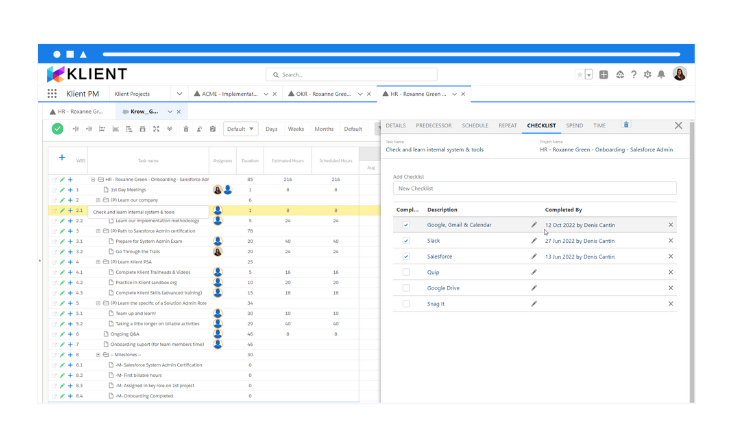
Here’s a detailed example of a project scope for a hypothetical project:
Project Name: Implementation of a Marketing Automation System
Background: The company has recently grown and is struggling to manage its customer data, marketing campaigns, and leads. The current systems are outdated and not integrated, leading to data inaccuracies, inconsistent messaging, and inefficiencies. The company has decided to implement a marketing automation system to streamline processes, improve customer engagement, and increase sales revenue.
Project Scope:
- Research and Vendor Selection
- Research and identify potential vendors that provide marketing automation software and services.
- Evaluate and select a vendor that meets the company’s requirements and budget.
- Negotiate pricing and contractual terms with the selected vendor.
- System Implementation
- Develop a project plan for the implementation of the marketing automation system.
- Coordinate with the vendor to ensure the system is set up according to the company’s needs.
- Integrate the new system with existing systems, including CRM and website.
- Migrate data from the old systems to the new system and ensure data accuracy.
- Test and troubleshoot the new system to ensure it is functioning correctly.
- Marketing Campaign Development
- Develop a marketing campaign plan that utilizes the new marketing automation system.
- Develop templates for email marketing campaigns, landing pages, and lead capture forms.
- Create content for campaigns, including email copy, social media posts, and blog posts.
- Develop lead scoring and segmentation criteria to ensure campaigns are targeted and effective.
- Sales Enablement
- Develop processes for lead management, including lead assignment, follow-up, and qualification.
- Provide training to sales team members on the new marketing automation system.
- Develop reports and dashboards that provide visibility into the sales pipeline and track key metrics.
- Post-Implementation Support
- Provide ongoing support and maintenance for the marketing automation system.
- Monitor system performance and data accuracy and make adjustments as needed.
- Provide training and support to users as needed.
Objectives:
- Improve Customer Engagement
- Implement a marketing automation system that enables targeted and personalized messaging.
- Increase the frequency and effectiveness of marketing campaigns to engage customers and drive sales.
- Increase Sales Revenue
- Implement a marketing automation system that streamlines lead management and improves lead quality.
- Enable the sales team to close deals more efficiently by providing relevant and timely information.
- Improve Operational Efficiency
- Streamline marketing and sales processes by integrating systems and automating tasks.
- Reduce data inaccuracies and inconsistencies by consolidating data into a single system.
By defining the project scope and objectives, the company can focus its efforts on achieving its goals, ensuring successful project delivery.
II. How to do a Professional Services Project Management like a pro: Creating a Project Plan and Timeline
A project plan and timeline are essential to guide the project team and track progress. The following elements should be included in a project plan and timeline:
- Task list and dependencies: What tasks are required to complete the project, and what are the dependencies between tasks?
- Milestones and deadlines: What are the key project milestones, and what are the associated deadlines?
- Resource allocation: What resources are required for each task, and how will they be allocated?
- Contingency planning: What happens if a task is delayed, or a resource becomes unavailable?
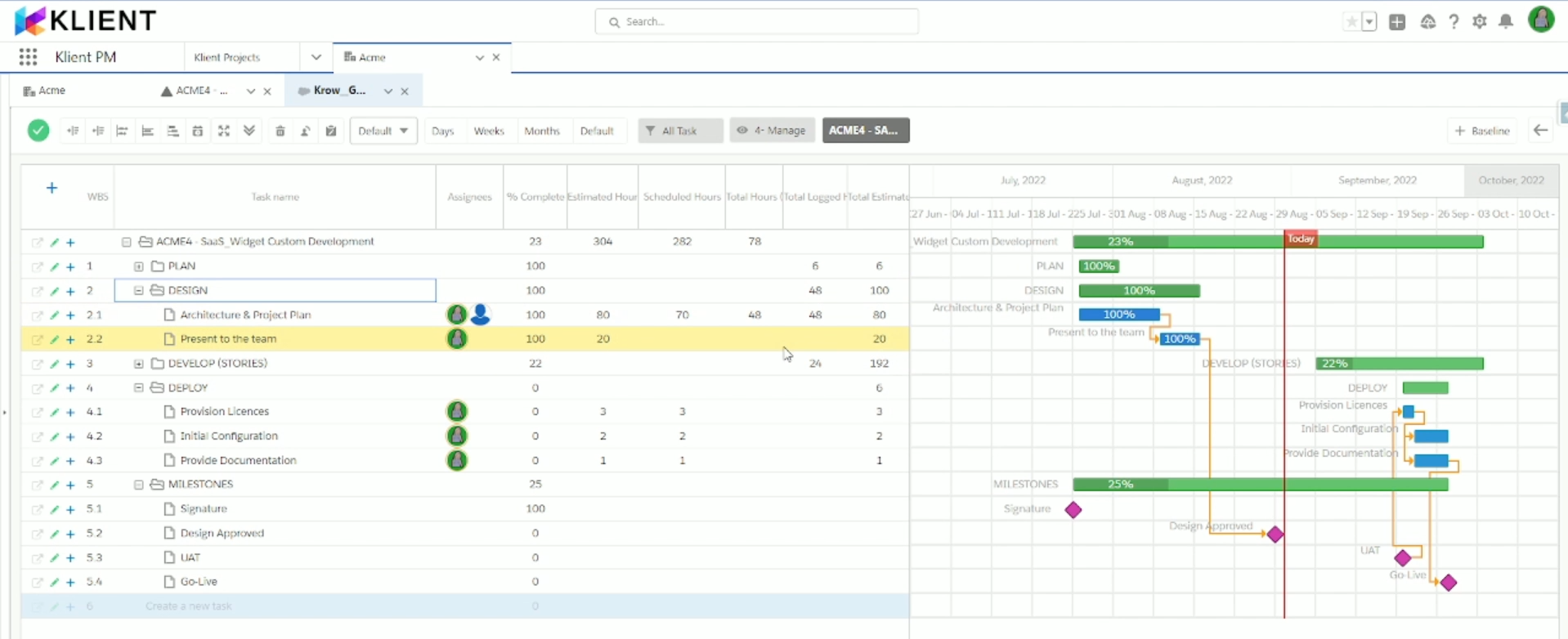
Here’s a detailed example of a project plan and timeline for a hypothetical project:
Project Name: Implementation of a Marketing Automation System
Project Objectives:
- Improve Customer Engagement
- Increase Sales Revenue
- Improve Operational Efficiency
Project Plan:
Phase 1: Research and Vendor Selection
- Duration: 2 weeks
- Tasks:
- Define system requirements
- Research potential vendors
- Create vendor evaluation criteria
- Evaluate vendors
- Select vendor
- Negotiate pricing and contractual terms
Phase 2: System Implementation
- Duration: 12 weeks
- Tasks:
- Develop project plan
- Develop data migration plan
- Configure system settings
- Set up integrations with CRM and website
- Migrate data to new system
- Test and troubleshoot system
Phase 3: Marketing Campaign Development
- Duration: 4 weeks
- Tasks:
- Develop marketing campaign plan
- Develop email marketing templates
- Develop landing page templates
- Develop lead capture form templates
- Develop lead scoring and segmentation criteria
- Develop content for campaigns
Phase 4: Sales Enablement
- Duration: 4 weeks
- Tasks:
- Develop lead management processes
- Provide sales team training
- Develop reports and dashboards
Phase 5: Post-Implementation Support
- Duration: Ongoing
- Tasks:
- Provide ongoing support and maintenance
- Monitor system performance
- Provide user training and support
Project Timeline:
- Week 1-2: Define project scope and objectives, establish project team, and initiate Phase 1: Research and Vendor Selection
- Week 3-4: Complete vendor evaluation and select vendor for the marketing automation system
- Week 5-16: Complete Phase 2: System Implementation
- Week 17-20: Complete Phase 3: Marketing Campaign Development
- Week 21-24: Complete Phase 4: Sales Enablement
- Week 25-ongoing: Complete Phase 5: Post-Implementation Support
By defining the project plan and timeline, the project team can ensure that each task is completed within a specific timeframe and the overall project is completed on time and within budget. The plan and timeline can also help the team to monitor project progress, identify any delays or issues, and adjust the plan as needed to ensure project success.
III. How to do a Professional Services Project Management like a pro: Identifying and Managing Project Risks
Professional services projects are often complex and involve a range of factors that can impact project success, such as multiple stakeholders, tight timelines, and unique requirements. Despite the best efforts of project managers and teams, unexpected events and obstacles can arise that can impact project progress and delivery. Effective risk management is essential to identify and address potential risks, ensuring project success and minimizing negative impacts on clients and the organization. By implementing risk management strategies and processes, professional services organizations can mitigate risks, improve project outcomes, and build stronger client relationships.

Identifying and managing project risks is critical to reducing project uncertainty and ensuring successful outcomes. Key elements of risk management include:
- Risk assessment: Identifying potential risks to the project and their likelihood and impact.
- Risk prioritization: Prioritizing risks based on their likelihood and impact and developing strategies to mitigate or manage them.
- Risk mitigation and management: Developing strategies to reduce or eliminate risks and implementing them throughout the project lifecycle.
Here’s a list of the most frequent project risks:
- Scope Creep: This occurs when the project scope expands beyond what was originally planned, often due to a lack of clear scope definition or changes to project requirements.
- Resource Constraints: This occurs when the project team doesn’t have the necessary resources to complete the project on time, such as budget, staff, or equipment.
- Technical Challenges: This occurs when the project team encounters technical challenges or obstacles that prevent them from completing the project as planned, such as software or hardware compatibility issues.
- Stakeholder Conflict: This occurs when there are disagreements or conflicts between project stakeholders, such as conflicting priorities or objectives, that impact project progress and success.
- Communication Breakdown: This occurs when there is a lack of clear communication between project team members or stakeholders, leading to misunderstandings or delays.
- Schedule Delays: This occurs when the project schedule is impacted by unexpected events or delays, such as weather or unforeseen technical issues.
- Quality Issues: This occurs when the project deliverables don’t meet the necessary quality standards, often due to inadequate testing or quality assurance measures.
- Budget Overruns: This occurs when the project spending exceeds the allocated budget, often due to unexpected costs or changes in project requirements.
- Risk Management Failure: This occurs when the project team fails to identify and address potential project risks, leading to project delays, budget overruns, or quality issues.
- Vendor or Supplier Issues: This occurs when vendors or suppliers fail to meet their obligations or deliverables, impacting project progress and success.
Professional services projects are often complex and involve multiple stakeholders, tight timelines, and unique requirements. While effective project management can help mitigate risks and ensure project success, there are several common project risks that can impact project progress and delivery. These risks include scope creep, resource constraints, technical challenges, stakeholder conflict, communication breakdown, schedule delays, quality issues, budget overruns, risk management failure, and vendor or supplier issues. By identifying and understanding these risks, project managers can develop strategies to manage them and reduce their impact on project success. Effective risk management, clear communication, and proactive planning can help mitigate these risks and increase the chances of project success.
IV. How to do a Professional Services Project Management like a pro: Defining and Tracking Project Budget
Defining and tracking project budget is essential to ensuring the project is completed within financial constraints. Key elements to consider when defining and tracking project budget include:
- Establishing a project budget: Defining the project’s financial constraints and developing a budget that accounts for all project costs.
- Monitoring project spending: Tracking project spending to ensure it stays within budget and identifying areas where budget adjustments may be needed.
- Forecasting project spending: Predicting future project spending based on current trends and adjusting the budget accordingly.
- Communicating budget status: Regularly communicating budget status to stakeholders and clients to keep them informed of project financials.
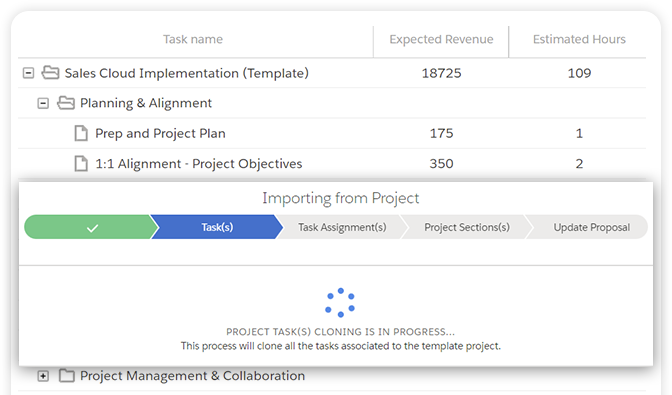
Estimage made easy!
Here’s a detailed example of a project budget for a hypothetical project:
Project Name: Implementation of a Marketing Automation System
Background: The company has decided to implement a marketing automation system to streamline processes, improve customer engagement, and increase sales revenue. The project team will include a project manager, a system administrator, a data migration specialist, a marketing campaign specialist, and a sales enablement specialist.
Project Budget:
- Personnel Costs:
- Project Manager: $15,000
- System Administrator: $20,000
- Data Migration Specialist: $18,000
- Marketing Campaign Specialist: $20,000
- Sales Enablement Specialist: $20,000
- Total Personnel Costs: $93,000
- Hardware and Software Costs:
- Marketing Automation System: $30,000
- CRM System Integration: $10,000
- Website Integration: $5,000
- Email Marketing Software: $5,000
- Total Hardware and Software Costs: $50,000
- Training and Support Costs:
- Vendor Training: $5,000
- User Training: $10,000
- Ongoing Support: $15,000
- Total Training and Support Costs: $30,000
- Contingency Fund:
- Unforeseen Expenses: $10,000
Total Project Budget: $183,000
By estimating the costs associated with personnel, hardware and software, training and support, and contingencies, the project team can develop a realistic budget that helps ensure the project is completed on time and within budget. The budget can also help the team to monitor project spending and adjust the budget as needed to ensure project success.
V. How to do a Professional Services Project Management like a pro: Managing Project Resources and Team Members
Managing project resources and team members is essential to achieving project success in professional services. With limited resources and tight timelines, effective resource and team management can help organizations stay on track and deliver high-quality projects. Key elements of resource and team management include resource allocation, team communication, performance tracking, and conflict resolution. By implementing effective resource and team management strategies, organizations can improve team collaboration, reduce project delays, and drive business growth.
Managing project resources and team members is essential to achieving project success. Key elements of resource and team management include:
- Resource allocation: Assigning the right resources to the right tasks based on skill sets and availability.
- Team communication: Ensuring team members are informed of project status and objectives, and communicating effectively to avoid misunderstandings or conflicts.
- Performance tracking: Monitoring team member performance to ensure that they are meeting project objectives and addressing any performance issues promptly.
- Conflict resolution: Resolving conflicts between team members or stakeholders to ensure the project stays on track.
In professional services, managing project resources and team members is critical to achieving project success. By allocating resources effectively, communicating regularly, tracking performance, and resolving conflicts promptly, organizations can build strong project teams and ensure project delivery is on time and within budget. Effective resource and team management can help organizations optimize their resources and drive project success, ultimately leading to stronger client relationships and business growth.
By prioritizing these strategies, organizations can navigate the complexities of professional services project management and deliver successful projects.
VI. How to do a Professional Services Project Management like a pro: Monitoring Project Progress and Making Adjustments as Needed
Professional services projects often involve complex requirements, multiple stakeholders, and tight timelines, which can make it challenging to ensure that the project progresses as planned. While effective project planning and risk management can help mitigate potential issues, it’s still common for projects to experience unforeseen obstacles or delays. Therefore, it’s crucial for project teams to regularly assess project progress, identify any areas that require adjustment, and take the necessary steps to get the project back on track.
In this section, we will explore how to effectively monitor project progress, and provide guidance on making adjustments as needed. We will also discuss how to effectively communicate progress updates to stakeholders, and offer tips for managing project scope, budget, and schedule changes. By being proactive in monitoring project progress and making necessary adjustments, professional services organizations can improve project outcomes, mitigate project risks, and build strong relationships with clients.
Monitoring project progress is essential to ensure that the project stays on track and meets its objectives. Key elements of project progress monitoring include:
- Tracking project tasks and milestones: Regularly tracking progress against project tasks and milestones to identify any issues or delays.
- Adjusting project plan as needed: Making adjustments to the project plan as needed based on progress, risk assessments, and stakeholder feedback.
- Measuring project performance: Assessing project performance against defined project metrics, such as cost, schedule, and quality, to identify areas for improvement.
here’s a list of metrics and KPIs to track for project progress and to make adjustments:
- Timeline Metrics:
- Planned vs. Actual Timeline: This metric compares the original project timeline to the actual timeline to identify any delays or issues.
- Time to Complete Key Milestones: This metric tracks the time it takes to complete key project milestones to identify any potential delays or issues.
- Budget Metrics:
- Planned vs. Actual Budget: This metric compares the original project budget to the actual budget to identify any budget overruns or cost savings.
- Cost to Complete: This metric tracks the remaining project costs and compares it to the original budget to ensure that the project stays within budget.
- Scope Metrics:
- Scope Creep: This metric tracks any changes to the project scope to identify any potential issues or changes that may require additional resources or budget.
- Change Request Volume: This metric tracks the number of change requests made during the project, which can provide insight into potential project scope or requirement issues.
- Resource Metrics:
- Utilization: This metric tracks the utilization of project resources, including staff, equipment, and other resources, to ensure that resources are used effectively and efficiently.
- Burn Rate: This metric tracks the rate at which the project budget is being spent to ensure that the project stays on track financially.
- Quality Metrics:
- Defect Density: This metric tracks the number of defects per unit of work, which can provide insight into the overall quality of the project deliverables.
- Customer Satisfaction: This metric tracks customer satisfaction with the project deliverables, which can provide insight into overall project success.
- Risk Metrics:
- Risk Register: This metric tracks all identified project risks, including the likelihood and potential impact, to ensure that the project team is aware of potential risks and can take appropriate action.
- Risk Response Effectiveness: This metric tracks the effectiveness of risk responses and mitigation strategies, providing insight into the overall effectiveness of risk management efforts.
By tracking these metrics and KPIs, project teams can assess project progress and identify potential issues that may require adjustments to the project plan. Effective project progress tracking and adjustment can help ensure that the project is delivered on time, within budget, and meets the client’s requirements and expectations.
VII. How to do a Professional Services Project Management like a pro: Communicating with Stakeholders and Clients
Effective communication is essential to the success of professional services projects. These projects often involve multiple stakeholders, tight timelines, and unique requirements, which can create challenges in managing project communication. Effective communication can help build strong relationships with clients and project team members, ensure that everyone is aligned with project goals and objectives, and mitigate project risks. In this section, we will explore the key elements of effective communication in professional services projects, including stakeholder identification, communication planning, and ongoing project communication.

We will also provide insights into how to manage project risks through effective communication, and offer tips for effective communication in virtual or remote project teams. By implementing best practices for communication, professional services organizations can improve project outcomes and strengthen client relationships.
Effective communication with stakeholders and clients is critical to project success. Key elements of effective communication include:
- Regular communication: Regularly communicating project status and progress to stakeholders and clients to keep them informed of project developments.
- Providing transparency: Providing transparency into project processes, objectives, and challenges to build trust and foster collaboration.
- Addressing concerns: Addressing stakeholder and client concerns promptly to avoid misunderstandings and build strong relationships.
- Soliciting feedback: Soliciting stakeholder and client feedback to identify areas for improvement and ensure client satisfaction.
Here’s a detailed example of a project status communication:
Subject: Project Status Update: Implementation of a Marketing Automation System
Dear Team,
I wanted to provide an update on the status of our project to implement a marketing automation system. As you know, this project is a critical initiative for our organization, and I’m pleased to report that we’re making excellent progress towards achieving our goals.
Here’s a summary of our project status:
- Research and Vendor Selection: Completed
We have completed the vendor evaluation process and selected a vendor that meets our requirements and budget. We are in the process of finalizing the contractual terms.
- System Implementation: In Progress
The vendor is configuring the marketing automation system according to our requirements, and we are working on integrating the system with our CRM and website. We have completed the data migration process and are currently testing and troubleshooting the system.
- Marketing Campaign Development: Upcoming
We are finalizing our marketing campaign plan, developing email marketing templates, landing page templates, and lead capture form templates. We are also developing lead scoring and segmentation criteria and developing content for our campaigns.
- Sales Enablement: Upcoming
We are developing our lead management processes and will provide training to our sales team once the system is up and running. We are also developing reports and dashboards that will provide visibility into the sales pipeline and track key metrics. Overall, the project is progressing according to plan, and we are on track to meet our project timeline and budget. However, we do anticipate some risks that we need to manage, including potential delays due to technical challenges or unexpected events. To ensure effective communication and collaboration, we will continue to hold regular project status meetings and provide updates on our progress. I encourage you to share any feedback or concerns you may have, and please let me know if you have any questions.
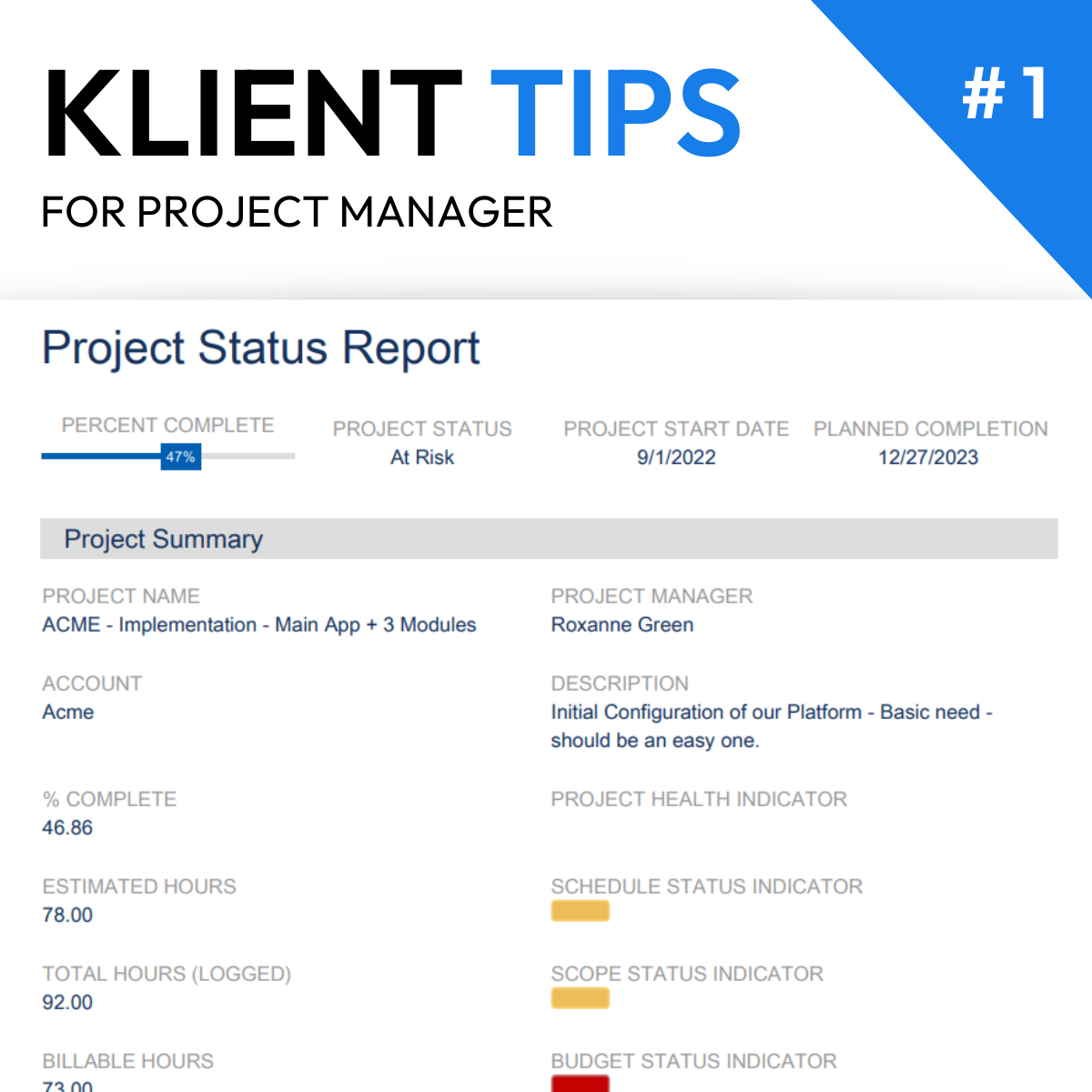
Thank you for your hard work and dedication to this project.
Best regards,
[Your Name] Project Manager
Best Practices for Professional Services Project Management
Professional services projects can be complex, involving multiple stakeholders, tight timelines, and unique requirements. To successfully deliver these projects, it’s essential to establish effective project management practices. In addition to following the key project management process elements, there are several best practices that can help ensure successful project delivery. These include establishing project management standards and methodologies, leveraging project management software and tools, aligning project goals with business strategy, building a collaborative project team culture, and conducting effective project meetings and reporting.
In addition to the above project management process elements, there are several best practices that can help ensure successful project delivery. These include:
- Establishing project management standards and methodologies: Defining standardized project management practices and methodologies that can be applied to all projects to ensure consistency and improve efficiency.
- Leveraging project management software and tools: Using project management software and tools to streamline project management processes, automate repetitive tasks, and improve communication and collaboration.
- Aligning project goals with business strategy: Ensuring that project goals align with overall business strategy to drive value and achieve business objectives.
- Building a collaborative project team culture: Encouraging a collaborative culture within the project team to foster communication, trust, and engagement.
- Conducting effective project meetings and reporting: Ensuring that project meetings and reporting are effective, efficient, and informative to keep all stakeholders and team members informed of project status and progress.
By implementing best practices in professional services project management, organizations can improve the efficiency and effectiveness of their project delivery. Standardizing project management practices, leveraging software and tools, aligning goals with business strategy, building a collaborative team culture, and conducting effective meetings and reporting can help organizations achieve their project objectives and build stronger client relationships. By prioritizing these best practices, organizations can increase the chances of project success, improve efficiency, and drive business growth.
Common Challenges in Professional Services Project Management and How to Address Them
Professional services projects can be challenging, with tight timelines, multiple stakeholders, and changing requirements. Despite the best efforts of project managers, challenges can still arise that can impact project success. Common challenges in professional services project management include managing scope creep, balancing project constraints and client expectations, dealing with unforeseen events and issues, and ensuring team members are adequately trained and skilled. Addressing these challenges is critical to maintaining project momentum and delivering successful projects.
Despite the best efforts of project managers, there are still common challenges that can arise during project delivery. Here are some of the most common challenges and how to address them:
- Managing scope creep: Addressing scope creep by clearly defining project scope, identifying any changes to the scope, and obtaining client approval before proceeding with any changes.
- Balancing project constraints and client expectations: Addressing this challenge by managing client expectations through clear communication, regular reporting, and prioritizing project constraints and deliverables.
- Dealing with unforeseen events and issues: Addressing this challenge by having a contingency plan in place to handle unforeseen events and issues, and being prepared to adjust the project plan as needed.
- Ensuring team members are adequately trained and skilled: Addressing this challenge by providing training and development opportunities to ensure team members have the skills and knowledge needed to successfully deliver the project.
In professional services project management, challenges are inevitable. However, by understanding common challenges and implementing strategies to address them, organizations can increase the chances of project success. By managing scope creep, balancing project constraints and client expectations, having a contingency plan for unforeseen events, and ensuring team members are adequately trained, organizations can build stronger client relationships, improve project delivery, and drive business growth. By prioritizing these strategies, organizations can improve project success and navigate the complex landscape of professional services project management.
Conclusion
Effective project management is essential to delivering successful professional services projects. By following best practices, establishing clear project objectives and timelines, monitoring project progress, and communicating effectively with stakeholders and clients, you can increase the chances of project success. Despite the challenges that may arise, with the right tools and strategies, professional services firms can deliver high-quality projects on time and on budget, building strong client relationships and growing their business.

You liked this Klient Tip? Share it with your team!
Discover more articles from Klient

Replace all your tools with Klient, Salesforce #1 PSA platform
Run your entire SaaS and consulting business on a single professional service automation platform native to Salesforce!




